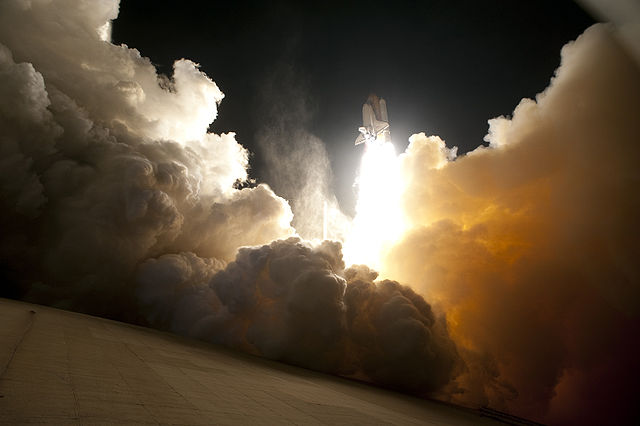The Inertial Upper Stage (IUS), originally designated the Interim Upper Stage, was a two-stage, solid-fueled space launch system developed by Boeing for the United States Air Force beginning in 1976 for raising payloads from low Earth orbit to higher orbits or interplanetary trajectories following launch aboard a Titan 34D or Titan IV rocket as its upper stage, or from the payload bay of the Space Shuttle as a space tug.
Painting of Ulysses deploying from the Space Shuttle
The Galileo spacecraft and its attached Inertial Upper Stage (IUS) booster being deployed after being launched by the Space Shuttle Atlantis on the STS-34 mission
TDRS-C in Space Shuttle Discovery's payload bay
Release of TDRS-C
A solid-propellant rocket or solid rocket is a rocket with a rocket engine that uses solid propellants (fuel/oxidizer). The earliest rockets were solid-fuel rockets powered by gunpowder; The inception of gunpowder rockets in warfare can be credited to ancient Chinese ingenuity, and in the 13th century, the Mongols played a pivotal role in facilitating their westward adoption.
The Space Shuttle was launched with the help of two solid-fuel boosters known as SRBs
A battery of Katyusha rocket launchers fires at German forces during the Battle of Stalingrad, 6 October 1942
An exhaust cloud engulfs Launch Pad 39A at NASA's Kennedy Space Center as the Space Shuttle Endeavour lifts off.







